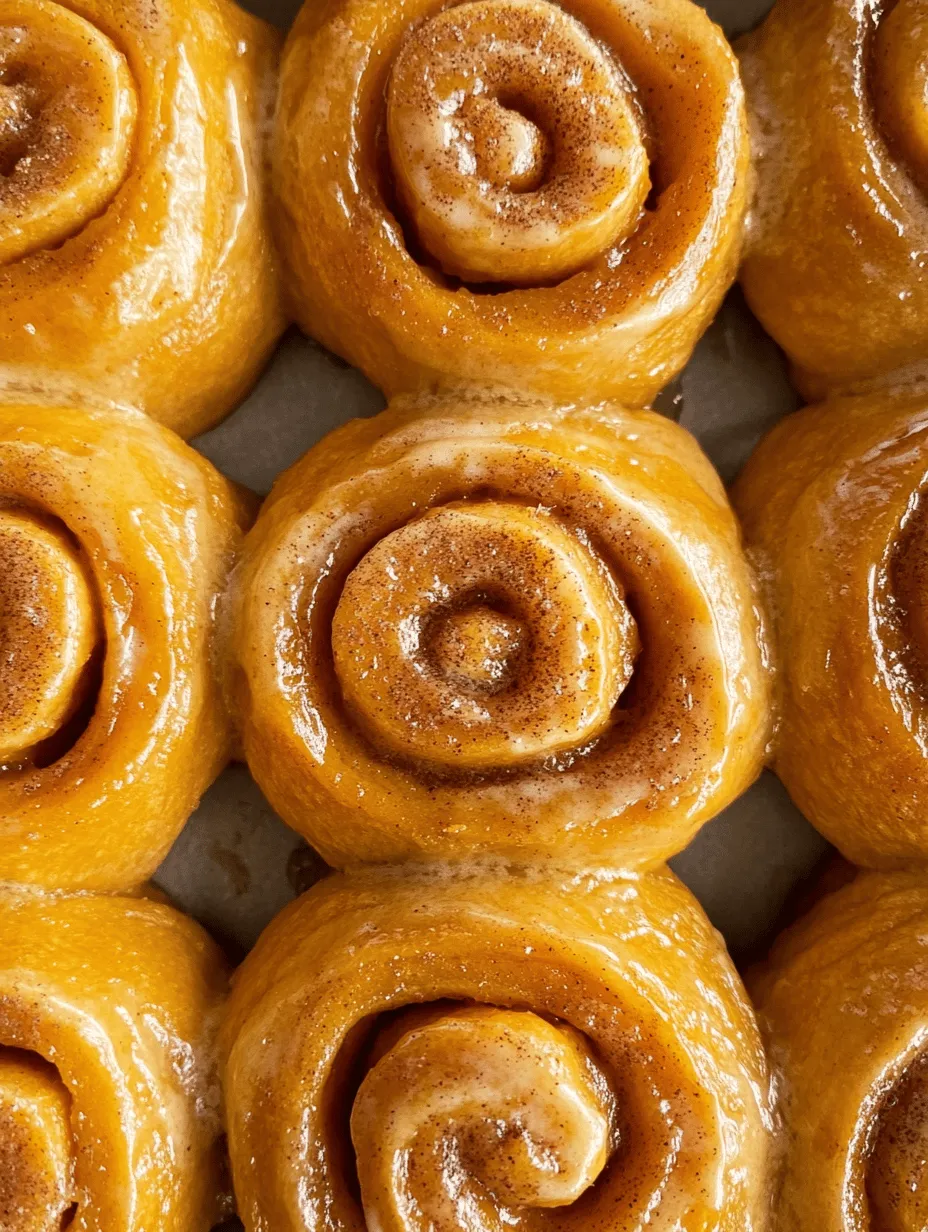Introduction
Sweet potato rolls are a delightful twist on traditional bread that have been gaining popularity in recent years. These rolls are not only visually appealing with their warm, golden hue, but they also offer a unique flavor profile that sets them apart from standard dinner rolls. The natural sweetness of sweet potatoes complements the bread’s soft and fluffy texture, making them a perfect addition to any meal, from holiday feasts to casual weeknight dinners.
Incorporating sweet potatoes into baked goods is becoming increasingly important, not only for their flavor but also for their nutritional benefits. Sweet potatoes are rich in vitamins, particularly vitamin A, as well as minerals and antioxidants, making them a healthier alternative to other ingredients. By using them in your rolls, you’re not just creating a delicious treat; you’re enhancing the nutritional value of your dish, ensuring that your family and friends are not only satisfied but also nourished.
The texture of sweet potato rolls is often described as pillowy and tender, with a slight sweetness that pairs beautifully with butter or any savory accompaniment. Whether served alongside a hearty soup, as a base for sliders, or simply enjoyed on their own, these rolls are bound to become a favorite in your household.
The Nutritional Benefits of Sweet Potatoes
Sweet potatoes are more than just a delicious ingredient; they are a powerhouse of nutrition. These vibrant tubers are rich in essential vitamins and minerals, making them a smart choice for anyone looking to boost their diet. One of the standout nutrients found in sweet potatoes is beta-carotene, which the body converts into vitamin A. This vitamin is crucial for maintaining healthy vision, supporting the immune system, and promoting skin health.
Beyond vitamin A, sweet potatoes contain significant amounts of vitamin C, vitamin B6, potassium, and manganese. Vitamin C is known for its antioxidant properties, helping to protect the body against free radicals and supporting overall immune function. Potassium is essential for heart health, as it helps regulate blood pressure and fluid balance in the body. Manganese plays a vital role in metabolism and bone formation.
The fiber content in sweet potatoes is another reason to include them in your baking. Dietary fiber is important for digestive health, helping to maintain regular bowel movements and prevent constipation. It also aids in stabilizing blood sugar levels, making sweet potato rolls a great option for those mindful of their carbohydrate intake.
With their naturally sweet flavor profile, sweet potatoes can replace added sugars in many recipes, allowing you to create delicious baked goods that are lower in refined sugars while still satisfying your sweet tooth.
Essential Ingredients for Sweet Potato Rolls
To create the most delicious and fluffy sweet potato rolls, it’s important to understand the essential ingredients you’ll be working with. Each component plays a vital role in achieving the perfect texture and flavor.
Mashed Sweet Potatoes
The star ingredient in these rolls is, of course, the mashed sweet potatoes. They provide not only moisture but also a unique sweetness that enhances the overall flavor. When selecting sweet potatoes, look for ones that are firm and free of blemishes. The best way to prepare them for this recipe is to peel, boil, and mash them until smooth. This will ensure that they blend seamlessly into the dough, contributing to its tender texture.
Unsalted Butter
Unsalted butter is crucial for adding richness and tenderness to the rolls. It helps create a soft and fluffy texture while also enhancing the flavor. Using unsalted butter allows you to control the amount of salt in your rolls, ensuring that the flavor is balanced just right. For best results, use room temperature butter, as it will incorporate more easily into the dough.
Granulated Sugar
A touch of granulated sugar is necessary to balance the flavors in your sweet potato rolls. The sugar not only adds sweetness but also aids in browning the rolls as they bake, giving them a beautiful golden color. You can adjust the amount of sugar to your taste, but a small amount is essential for achieving that delectable flavor.
Active Dry Yeast
Active dry yeast is the leavening agent that makes these rolls rise, creating their signature fluffy texture. When activated properly, yeast ferments the sugars in the dough, producing carbon dioxide that causes the dough to expand. It’s critical to ensure that your yeast is fresh and activated correctly to achieve the best results.
Flour
Flour is the backbone of any bread recipe, providing structure and body to the rolls. All-purpose flour works perfectly for sweet potato rolls, but you can experiment with bread flour for a chewier texture. The amount of flour needed can vary based on factors like humidity, so it’s important to add it gradually until you reach the desired dough consistency.
Optional Spices
For those looking to enhance the flavor of their sweet potato rolls, optional spices like cinnamon and nutmeg can add a warm, aromatic touch. These spices complement the natural sweetness of the sweet potatoes and can elevate the overall taste of the rolls. Feel free to add them according to your personal preference.
Step-by-Step Instructions for Making Sweet Potato Rolls
Now that you have a solid understanding of the ingredients and their roles, let’s dive into the step-by-step instructions for making these soft and fluffy sweet potato rolls.
Preparing the Sweet Potatoes
Start by preparing the sweet potatoes. First, peel the sweet potatoes with a vegetable peeler, taking care to remove all the skin. Once peeled, cut them into evenly sized chunks to ensure they cook uniformly. Place the chunks in a pot of boiling water and cook them until they are fork-tender, which usually takes around 15-20 minutes.
Once cooked, drain the sweet potatoes and allow them to cool slightly before mashing. Use a potato masher or a fork to mash them until smooth, ensuring there are no lumps. For an ultra-smooth texture, you can use a food processor. The goal is to achieve a consistency that blends well into the dough, so take your time to get it right. Set aside the mashed sweet potatoes to cool completely before adding them to the dough mixture.
Activating the Yeast
While your sweet potatoes are cooling, it’s time to activate the yeast. In a small bowl, combine warm water (around 110°F or 43°C) and granulated sugar. Sprinkle the active dry yeast over the top and stir gently to combine. Allow the mixture to sit for about 5-10 minutes until it becomes frothy. This froth is an indication that the yeast is active and ready to use.
It’s important to use water that is warm but not hot, as excessive heat can kill the yeast. If you don’t see any froth after 10 minutes, it’s best to start over with fresh yeast.
Mixing Wet Ingredients
In a large mixing bowl, combine the activated yeast mixture, room temperature unsalted butter, and the cooled mashed sweet potatoes. Using a whisk or a spatula, mix the ingredients until they are well combined and smooth. The sweet potatoes should blend seamlessly with the yeast mixture, creating a uniform base for your dough.
Incorporating Flour
Once the wet ingredients are thoroughly mixed, it’s time to start incorporating the flour. Gradually add the all-purpose flour, one cup at a time, mixing with a wooden spoon or your hands until a dough begins to form. The goal is to achieve a soft and slightly sticky dough that pulls away from the sides of the bowl.
Keep in mind that the amount of flour required may vary depending on factors such as humidity and the moisture content of the sweet potatoes. If the dough feels too sticky, you can add a little more flour, but be cautious not to overdo it, as this can lead to dense rolls.
As you mix, be sure to knead the dough for about 5-10 minutes until it becomes smooth and elastic. This process helps develop the gluten in the flour, giving the rolls their desirable texture.
With these steps completed, you are well on your way to creating the most irresistible sweet potato rolls that will impress everyone at your table. Stay tuned for the next part, where we will cover the remaining steps to bake these delicious rolls to perfection.

Kneading the Dough
Kneading is a crucial step in creating the perfect sweet potato rolls. It helps develop the gluten in the dough, which gives the rolls their delightful texture. When kneading, the goal is to create a smooth, elastic dough that can hold its shape.
Techniques for Kneading to Develop Gluten
To effectively knead your dough, follow these steps:
1. Initial Mixing: Begin by mixing the ingredients until they are combined. You can use a wooden spoon or a stand mixer with a dough hook attachment for this purpose.
2. Kneading by Hand: Once your dough comes together, transfer it to a lightly floured surface. Push the dough away from you with the heel of your hand, then fold it back over itself. Rotate the dough a quarter turn and repeat this process. Continue kneading for about 8-10 minutes until the dough becomes smooth and elastic.
3. Kneading with a Mixer: If you prefer using a stand mixer, mix the dough on medium speed for about 5-7 minutes. You’ll know it’s ready when it pulls away from the sides of the bowl and is slightly tacky but not sticky.
Signs of Properly Kneaded Dough
Properly kneaded dough should feel smooth and elastic. You can check if it’s ready by performing the “windowpane test.” Take a small piece of dough and stretch it gently between your fingers. If it stretches thin enough to become translucent without tearing, you’ve developed enough gluten.
The Rising Process: Creating Airy Rolls
The rising process is essential for creating light and fluffy sweet potato rolls. This step allows the yeast to ferment and produce carbon dioxide, which causes the dough to rise.
First Rise: Importance of Fermentation
After kneading, place your dough in a greased bowl, cover it with a clean kitchen towel or plastic wrap, and let it rise in a warm, draft-free area. This first rise typically lasts about 1 to 2 hours or until the dough has doubled in size.
Ideal Conditions for Rising Dough
The ideal temperature for rising dough is between 75°F and 85°F (24°C to 29°C). If your kitchen is cooler, you can create a warm environment by placing the bowl in an oven that has been preheated to its lowest setting for a few minutes and then turned off.
How to Tell When Dough Has Risen Sufficiently
To check if the dough has risen enough, gently poke it with your finger. If the indentation remains without springing back, it’s ready for the next step. If it springs back quickly, allow it to rise for a bit longer.
Shaping the Rolls
Once the dough has risen sufficiently, it’s time to shape the rolls. This step is crucial for achieving a uniform size and beautiful presentation.
Techniques for Dividing and Shaping Dough into Rolls
1. Dividing the Dough: Gently punch down the risen dough to release excess air. Turn it out onto a floured surface and divide it into equal pieces. For standard-sized rolls, aim for about 2 ounces each.
2. Shaping: Take each piece and shape it into a ball by tucking the edges underneath to create a smooth surface. You can also roll it in your hands to ensure it’s round.
Tips for Uniformity and Aesthetics
To ensure that all rolls are the same size, consider using a kitchen scale to weigh each piece of dough. Additionally, placing the rolls in a baking pan close together will encourage them to rise upwards rather than outwards, leading to a more appealing shape.
Overnight Method: Convenience of Preparing in Advance
For those who want to streamline the baking process, consider preparing the rolls the night before. After shaping, place the rolls in the baking pan, cover them, and refrigerate overnight.
Benefits of the Overnight Rise for Flavor Development
An overnight rise allows the dough to ferment longer, enhancing the flavor and texture. The cooler temperature slows the yeast activity, resulting in a more complex flavor profile.
How to Manage Timing for Baking
If you choose the overnight method, remove the rolls from the refrigerator and let them sit at room temperature for about 30-60 minutes before baking. This will bring them back to the optimal temperature for baking.
Second Rise and Baking Sweet Potato Rolls
Once shaped, it’s time for the second rise, which is essential for achieving the perfect texture.
Preparing the Rolls for Baking
After the second rise, preheat your oven to 375°F (190°C). While the oven is heating, check the rolls. They should have puffed up and filled the gaps between them.
Importance of the Second Rise for Texture
The second rise, typically lasting about 30 minutes, helps create a lighter texture. This step allows the dough to expand again, ensuring the rolls are airy and fluffy after baking.
Preheating the Oven and Preparing the Baking Pan
Grease your baking pan lightly with butter or non-stick spray. If you’re using parchment paper, line the bottom of the pan for easier removal of the rolls after baking.
Baking Techniques
Optimal Baking Times and Temperatures
Bake the sweet potato rolls in the preheated oven for about 20-25 minutes. The baking time may vary slightly based on your oven and the size of the rolls.
Identifying Doneness Through Color and Texture
The rolls are done when they are golden brown on top and sound hollow when tapped on the bottom. You can also use a digital thermometer to check the internal temperature; it should read between 190°F and 200°F (88°C to 93°C) when fully baked.
Cooling and Serving Suggestions
Once out of the oven, let the rolls cool in the pan for about 5 minutes before transferring them to a wire rack. This cooling period is essential to set the texture and prevent them from becoming soggy.
Importance of Cooling Before Serving
Cooling allows the steam to escape, ensuring that the rolls remain dry and fluffy. If you serve them too hot, they may be doughy inside.
Brushing with Melted Butter for Extra Flavor
For an added touch of flavor and shine, brush the tops of the warm rolls with melted butter. This not only enhances the taste but also adds a beautiful glaze.
Flavor Variations and Customization Ideas
While the sweet potato rolls are delightful as is, consider these customization ideas to elevate your bread-making experience.
Suggestions for Add-ins (Herbs, Cheese, etc.)
– Herbs: Incorporate fresh herbs like rosemary, thyme, or chives into the dough for a savory twist.
– Cheese: Adding shredded cheese such as cheddar or mozzarella can introduce a creamy texture and flavor.
Alternative Spices for Different Flavor Profiles
Experiment with spices like cinnamon, nutmeg, or even a hint of cayenne pepper for a unique flavor profile. These spices can add warmth and depth to your sweet potato rolls.
Ideas for Serving: Pairing with Meals or as a Snack
These rolls can accompany a variety of meals, from holiday dinners to casual weeknight meals. Serve them with soups, stews, or as a base for sliders. They also make delicious snacks on their own or with a smear of butter or your favorite spread.
Conclusion
Making sweet potato rolls is an enjoyable and rewarding experience that combines the delightful taste of sweet potatoes with the wholesome goodness of homemade bread. The balance of taste, nutrition, and texture makes these rolls a perfect addition to any meal or a satisfying snack on their own.
This recipe not only invites you to savor the delicious flavor of sweet potatoes but also encourages you to embrace the process of baking. The joy of kneading, shaping, and watching your rolls rise is unparalleled.
So, gather your ingredients, roll up your sleeves, and try this sweet potato rolls recipe. You’ll be rewarded with soft, fluffy, and irresistibly delicious rolls that will impress your family and friends and satisfy your culinary cravings. Enjoy the homemade goodness of sweet potato rolls and share the love of baking with those around you!

